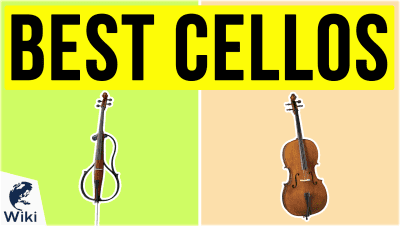5 Examples Of Chronological Order
There are a lot of different ways to organize information. But in many situations, it's best to sort events based on when they occurred, and to present them in order from oldest to most recent. This is known as chronological order. We've compiled a list of five examples of chronological order that showcase how useful and versatile a tool it can be. This video was made with Ezvid Wikimaker.
5 Examples of Chronological Order
- History Lessons: Recounting events in the order they occurred
- Literary Works: Time moves forward with each chapter
- Instructional Guides: Leading you through a process step by step
- Film and Television: A plot with a beginning, middle, and end
- Planning a Project: Working with a timeline one day at a time
Chronological Order in Everyday Life
Time is something all people have to keep in mind as they go about their lives. We use clocks and calendars to keep track of it. Sometimes people might plan ahead months, or even years, for a vacation or a special event. But more often than not, they're focused on what they have to do in the short term. As a person plans out their day or week, they tend to keep track of things in chronological order, from morning to night and Monday to Sunday. This gives them a simple framework that's useful for figuring out which priorities demand immediate attention and which can be put off until later.
The History of Timekeeping
3 Examples of Non-Chronological Order
While chronological order is a common and useful way to organize information, there are some cases where people, especially writers, choose to use a different method.
| Technique | Definition | Example |
|---|---|---|
| Flashback | A look back at the past within an otherwise chronological story | This is Us |
| Reverse Chronology | Telling a story backwards | Merrily We Roll Along |
| Nonlinear Narrative | Story order and chronological order are distinct from one another | Pulp Fiction |
Conclusion
Chronological order is used everywhere from scholarly works to cookbooks to popular culture. Since time is always moving forward, it makes sense to keep it in mind when laying out instructions or creating a story. Structuring things with a beginning, a middle, and an end (in that order) makes information easier for most people to absorb, whether that information is a history lesson or the plot of a sitcom.
In Depth
Chronological order is a way of arranging actions, events or things according to the time they occurred. It is demonstrated by showing what happened first, what went on next, what came about in the succeeding occurrences, and until what took place last. This manner of presentation is also called time or linear order. Here are five examples of this method.
This technique is mainly crucial in history and social studies. Events are presented from how something began until how it ended. Biographies of key people are often arranged from childhood to one's passing. Let us say that you are a teacher informing your students about George Washington. You can commence by talking about his younger years, then his life as a surveyor, followed by his military career, his involvement in the American Revolution and the Constitutional Convention, his presidency, his retirement, and finally, his death.
This manner of presenting information will make it easier for your pupils to understand more about the first president of the United States.
This manner of presenting information will make it easier for your pupils to understand more about the first president of the United States.
Linear order is evident in literature. For instance, when the Bible is studied as a literary work, many of its passages applied chronology, especially when pertaining to filiation of biblical characters. One case can be found in the last chapter of the Book of Ruth, which mentions King David's family tree.
It reads: "These are the descendants of Perez: Perez was the father of Hezron, Hezron was the father of Ram, Ram was the father of Amminadab, Amminadab was the father of Nahshon, Nahshon was the father of Salma, Salma was the father of Boaz, Boaz was the father of Obed, Obed was the father of Jesse, and Jesse became the father of David." The manner of narration started from the ancestor down to the posterity.
Sequential order is also essential in how-to videos, recipes, DIY projects and other articles that need step-by-step guide.
Let us say you want to show someone how to cook pancakes. You can present it this way: "First, prepare all the ingredients such as all-purpose flour, baking powder, salt, sugar, milk, egg, and butter. Second, strain all the dry components in a large bowl. Then, pour in the rest of the fixings. Mix all together until smooth. After that, heat a lightly oiled frying pan over medium-high temperature. Scoop one-fourth cup of batter onto the griddle. Brown on both sides and serve hot.
Giving detailed instructions chronologically makes it easier for a person to follow the procedure and produce a desirable outcome.
Television shows and movies also make use of time order. In the animated movie Toy Story 2, the tale of how Buzz Lightyear rescued Sheriff Woody was arranged in this sequence: from Woody's abduction, to his first encounter with Jessie, Bullseye and Stinky Pete, followed by Buzz's struggle to search for him, his reunion with his friends, subsequently unveiling the Prospector's plan to bring the whole Roundup gang to Tokyo, their attempt to save Jessie at the airport, and finally, returning to Andy's home together.
Television shows and movies also make use of time order.
In the duration of the film, the writer employed a flashback to reveal Jessie's story. But sticking to a linear order helped in maintaining structure and control of the plot without losing viewers' interest.
In project management, a chronological arrangement is necessary to aid team members in knowing which tasks should be done in a given time frame. It also helps them recognize what milestones need to be reached within the schedule.
Let us say that a publishing company needs to produce ten thousand copies of a novel in a span of one year. The process will begin with the author, who will be writing the whole story in the first four months. This will be submitted to the editor, who will review the contents of the draft. It will then be sent back to the writer for revisions, before the editor checks it again for the last time. These steps should be done in the next couple of months.
Let us say that a publishing company needs to produce ten thousand copies of a novel in a span of one year.
Once completed, it will be forwarded to the production team, who will publish the book before the year ends. Each step needs to abide by the deadline given in the plan. Failure to comply with their timetable will have damaging consequences on the publication flow.
Transitional words and phrases are often used when showcasing chronological order. These are necessary to clearly identify the sequence of events. These expressions include: at first, next, afterwards, and previously. Most time signals can also serve as sequence devices, like: early in the morning, thirty-four years ago, in 1986, over the next ten years, from July to December, and before the Renaissance occurred.
















